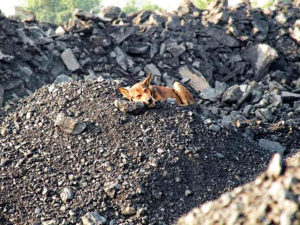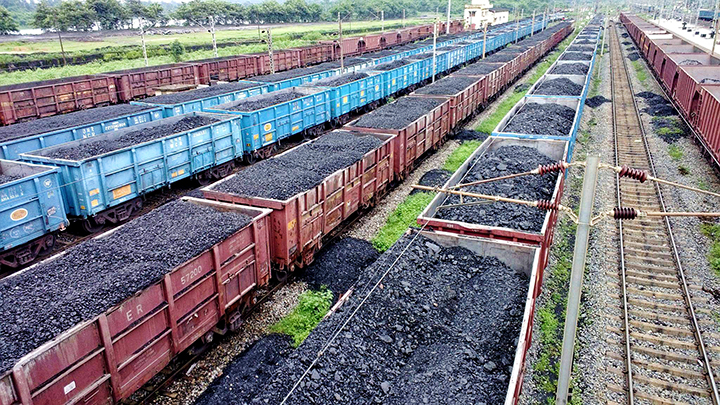Coal gasification looks attractive to developing countries like India, but it can also create a big long-term crisis
On 18 June, Prime Minister Narendra Modi inaugurated 41 coal mines for commercial mining. Government touted it as a major reform in the coal sector. It is expected to achieve Rs 33,000 crore of capital investment in the country in the coming 5-7 years. The PM said it is a major step in making India ‘self-reliant’.
Government has a goal of gasification of 100 million tonnes of coal by 2030 with an expected investment of Rs 20,000 crore. “We have kept an aim that by the year 2030, which means in this decade, around 100 million tonnes of coal should be gasified. For this, four projects have been identified and in them around Rs 20,000 crore would be invested,” the PM said.
In the last few years, the government has been keen on introducing private sector mining on very big terms to push Coal Bed Methane (CBM), Underground Coal Gasification (UCG), Surface Gasification— in a very big manner. Opening up coal mining for commercial auction has given a big push to it.
Coal gasification is a process of producing synthesis gas (also called syngas) from coal. Syngas is a mixture of hydrogen (H2), carbon monoxide (CO) and carbon dioxide (CO2). The syngas can then be used for multiple purposes like producing electricity, and making chemical fertiliser.
Coal gasification looks attractive to developing countries like India as it is considered efficient and cheap. But in the long run, it can also fuel a crisis. A recent study based in China says that these coal-to-gas (CTG) industries can create a huge regional water shortage and the western part of China is already suffering in this regard.
The study titled ‘Water Footprint Assessment for Coal-to-Gas’ says, “The Water Footprints of CTG in China is typically in the region of 0.055 m3 water per cubic meter of produced gas. In addition, the analysis of the components of this WF indicates that most of the water resources are used both in the process of CTG production itself, and also in the dilute discharge of pollutants.”
In terms of the planned production capacity of China’s CTG projects, the study finds that water use in some regions of Xinjiang, Inner Mongolia, Shanxi and Liaoning may account for 30-40% of regional water resources, which means the large-scale development of CTG projects may present significant risks to regional water resources.”
Many environmentalists and activists are opposing the government’s decision to allow commercial mining as many of them are located in rich biodiversity areas identified as “no-go zones”. Since Coal Gasification is mostly in-situ (on site), it can unearth a major crisis as many parts of India are already reeling under the water crisis.
The major change in Minerals Law (Amendment) bill that removes “end use” limit application on private companies, will motivate them to build gasification plants in these areas. That can create a host of problems.
Government, on the other hand, seems to be unaware of these concerns. Probably, the government wants to reduce the burden of coal import cost. In 2018-19, India imported 235.2 million tonnes of coal paying Rs 1.7 lakh crore, even when India remained the second largest producer of coal. That’s why the government is keen on commercial mining.

Last year, the Ministry of Chemical and Fertilisers, while reviving the Talcher fertiliser plant in Odisha, stated in a press release that coal gasification technology would reduce India’s reliance on imports for fertilisers and help in meeting CoP-21 commitments of the Paris Agreement.
However, this doesn’t seem to be the case. A study by Duke University says that syngas is more harmful than natural gases as it emits seven times more greenhouse gases. Laszlo Varro, head of gas, coal and power markets at the International Energy Agency (IEA) while talking to BBC said, “It can be a nice solution to local pollution, but its overall carbon intensity is worse [than coal mining], so it is not attractive at all from a Climate Change point of view”.
Underground gasification is a contributor to climate change. Another report titled ‘Fueling the Earth: The Chequered History of Underground Coal Gasification and Coal Chemicals around the World’ by an NGO called Friends of Earth International claims that, “approximately 860 Gigatonnes (Gt) of coal is currently accessible by conventional mining and around 88% of this must remain in the ground in order to have a chance of staying below 2°C of warming.”
Avinash Chanchal, an environment activist and author of Singrauli Files, acclaimed work on the impact of coal mines believes that the technology used for the gasification planned is archaic. “It contaminates both surface water and groundwater, and also emits greenhouse gases. I believe if renewable energy is available and becoming cheaper day by day, then why does the government want to start commercial mining to create coal based energy.”
“Coal mining creates a health crisis for workers and communities living around them. There are hundreds of examples of industrial accidents — killing people, destroying crops. So cost is high and this can not be the excuse for opening Coal mines for commercial purposes.”
States like Jharkhand, Maharashtra and Chattisgarh have opposed this decision to open coal mines for commercial auctions citing huge environmental and social costs. Many indigineous communities, environmentalists have also opposed this decision.
(Cover: A recent study based in China says that these coal-to-gas (CTG) industries can create a huge regional water shortage Credit: Indian Railways)





